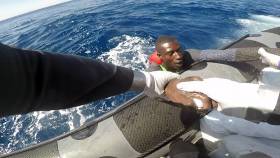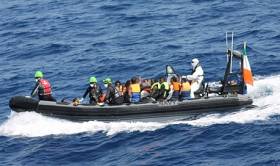Displaying items by tag: Migrants refugees rescued
Rescue by LÉ William Butler Yeats of 285 Migrants off Libyan Coast
#navy - Crew from the LÉ William Butler Yeats have recovered the bodies of three migrants and rescued 285 others in an operation off the Libyan coast.
The operation RTE reports took place last week in the Mediterranean 44km northwest of Tripoli.
The migrants had been on board two rubber vessels when they were rescued by the Irish Naval Service.
All are now on board the LÉ William Butler Yeats where they have been given food water and medical treatment were required.
Recently Deployed LÉ Samuel Beckett Rescues Migrants
#MigrantRescue - The Naval Service recently deployed LÉ Samuel Beckett, located and rescued a total of 130*migrants yesterday during a search and rescue (SAR) operation. The rescue took place 22 nautical miles NE of Tripoli, Libya.
The rescue operation arose from a request from the Italian Maritime Rescue Co-Ordination Centre when at 11am the migrants were brought on board LÉ Samuel Beckett, where they received food, water and medical treatment where required.
LÉ Samuel Beckett is currently awaiting further tasks. So far the OPV90 class has rescued 780 people since switching humanitarian task to the Mediterranean from sister, LÉ James Joyce which was welcomed home to the Naval Base, Cork Harbour at the end of last month.
*Figures for the SAR operation are provisional until confirmed by the Italian authorities.






























































